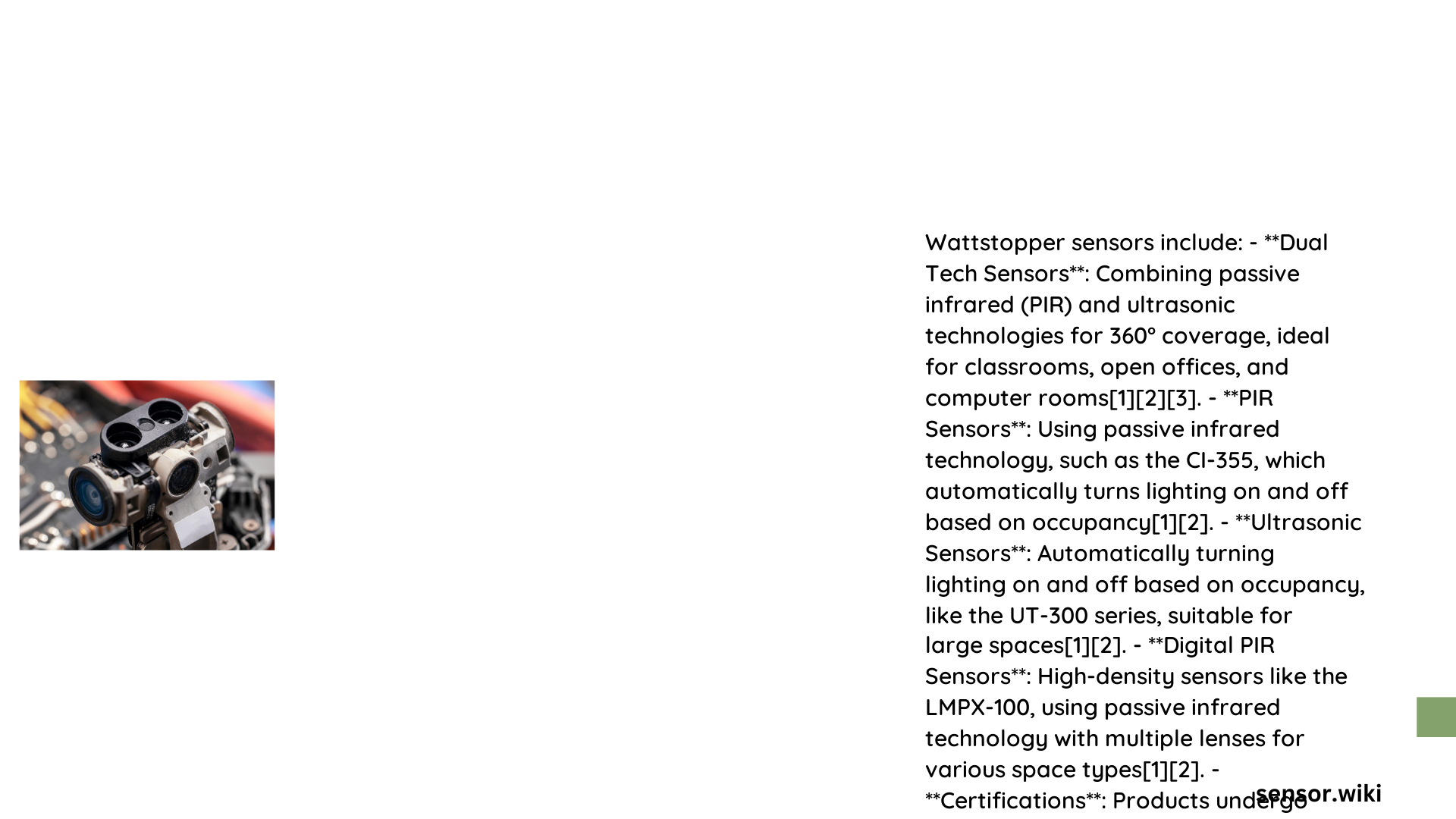WattStopper sensors represent advanced occupancy detection technology designed for precise environmental monitoring and energy management. These sophisticated devices utilize dual-technology sensing mechanisms, combining passive infrared (PIR) and ultrasonic technologies to deliver exceptional space coverage, sensitivity adjustments, and automated lighting control across commercial and institutional environments.
What Are WattStopper Sensors?
WattStopper sensors are intelligent occupancy detection devices engineered to optimize energy efficiency and automate lighting systems. These sensors utilize advanced sensing technologies to detect human presence and movement, triggering lighting controls with remarkable precision.
Key Features of WattStopper Sensors
| Sensor Model | Coverage Range | Voltage Requirements | Current Consumption |
|---|---|---|---|
| DT-200 | 1000 ft² | 24VDC (18-28V) | 25mA |
| DT-300 | 1300 ft² | 24VDC (18-28V) | 25mA |
How Do WattStopper Sensors Work?

WattStopper sensors employ a sophisticated dual-technology approach:
- Passive Infrared (PIR) Detection
- Measures heat signatures and movement
- Provides directional coverage
-
Minimizes false triggers
-
Ultrasonic Detection
- Emits high-frequency sound waves
- Detects micro-movements
- Complements PIR technology
What Are the Installation Requirements?
Mounting Considerations
- Recommended Height: 8-12 feet
- Temperature Range: 32°F to 131°F
- Mounting Options:
- Ceiling mount
- Wall mount
- Adjustable bracket configurations
How to Configure WattStopper Sensors?
Sensitivity and Time Delay Adjustments
- Time Delay Range: 30 seconds to 30 minutes
- Light Level Adjustment: 10FC to 300FC
- Sensitivity Settings:
- High/Low PIR sensitivity
- Minimum to maximum ultrasonic sensitivity
What Troubleshooting Techniques Exist?
Common Diagnostic Strategies
- Verify power connections
- Check wire integrity
- Assess LED indicator signals
- Recalibrate sensor settings
- Test in manual mode
What Are the Cost Considerations?
Pricing Factors
- Sensor Cost: Approximately $450 per unit
- Labor Installation: $50-$200 per sensor
- Additional Components: Power pack, wiring
What Performance Metrics Matter?
Evaluation Criteria
- Detection accuracy
- Energy savings potential
- Response time
- Coverage consistency
- Environmental adaptability
What Are Potential Deployment Scenarios?
Ideal Application Areas
- Office spaces
- Educational institutions
- Healthcare facilities
- Commercial buildings
- Retail environments
Conclusion
WattStopper sensors represent a sophisticated solution for intelligent space management, offering unparalleled precision in occupancy detection and energy optimization.
Recommendations
- Professional installation recommended
- Regular maintenance ensures optimal performance
- Consider site-specific requirements during selection
Technical Support
For advanced configuration and specialized deployment strategies, consult WattStopper’s technical documentation or contact authorized representatives.
